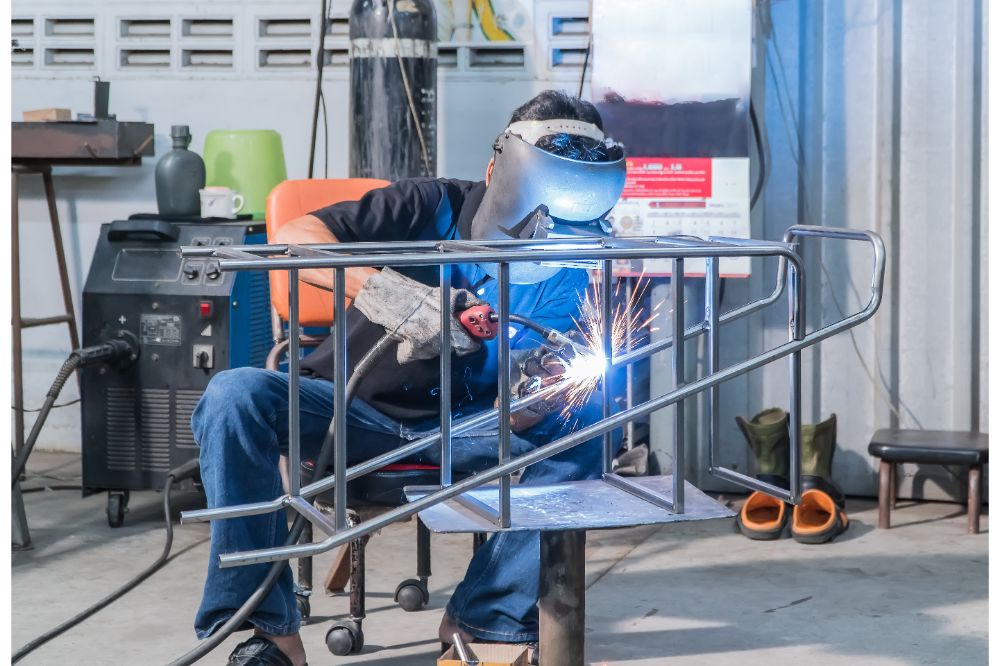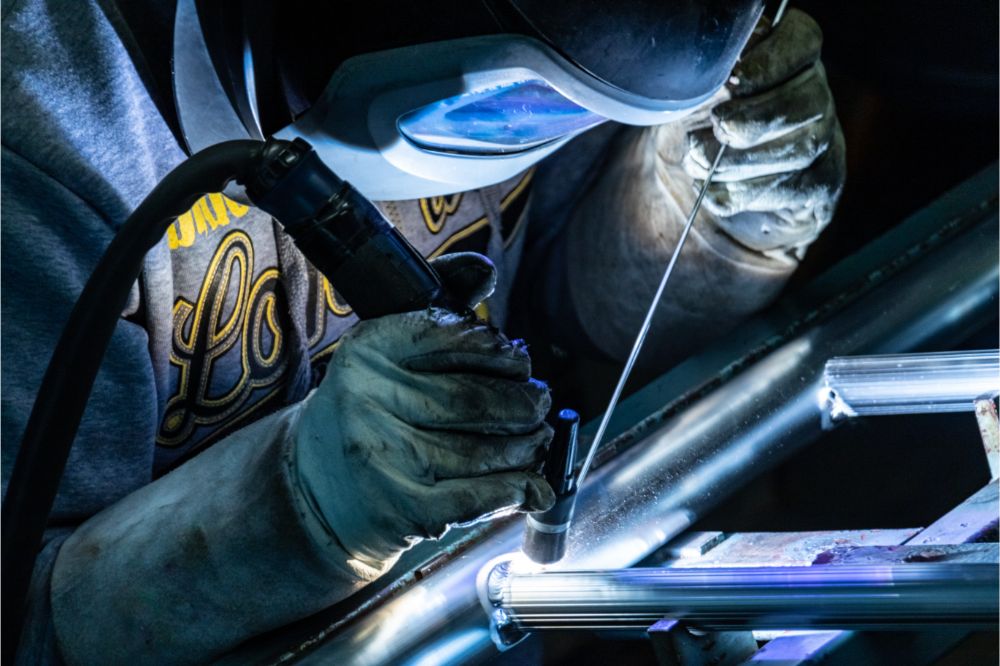Aluminum and steel are highly weldable materials. Therefore, welding aluminum to aluminum or steel to steel is a pretty easy and straightforward job. However, welding aluminum to steel is where the task becomes challenging and daunting.
Welding aluminum to other metals is possible through adhesive bonding or mechanical fastening. However, welding aluminum to steel requires the use of specific techniques such as friction and arc. So, if you are in a pickle and need to do a job that involves welding these two metals together, we are going to take a look at the best approach when it comes to welding aluminum to steel.
Why Would You Need to Bond Aluminum to Steel?
Ideally, it is best to weld the same type of metals together. However, some situations pop up and necessitate the need to weld two different metals together.
Steel has been the go-to metal for industrial and structural applications. However, because of its higher density, it makes vehicles heavier, which leads to higher gas emissions. In addition, as newer, stricter laws are being enacted, most companies are moving from using steel and turning to aluminum. However, completely replacing steel structures in the transport sector and other industries is almost impossible. As such, the ideal solution is to replace steel with aluminum where possible and join the two materials in the other parts of the structure.
Joining the two uses relatively simple techniques like adhesive bonding, brazing, or mechanical fasteners. However, in the case where structural integrity is needed, welding is the go-to option. But welding aluminum to steel can be challenging.
Why Is it Difficult to Weld Aluminum to Steel?
To understand this, you first need to know the difference in the metallic properties of these metals. For starters, steel is so much denser than aluminum. Steel has a density range of 7.75-8.05g/cm3, while aluminum has a density that’s about three times less at around 2.70g/cm3. This means that volume-wise, steel will be three times heavier than aluminum.
Another difference in their metallurgy is in their melting point. Steel has a higher melting point of 1370°C which is more than two times that of aluminum at 660°C. This presents a problem: how can you weld them simultaneously and melt them simultaneously to join them?
Even if you melt them simultaneously, this presents the third and final problem; these metals are insoluble to each other. This means that even in their molten state, they barely react. The final result is a brittle weld that cannot be applied in structural or industrial situations.
So how do you solve these three issues for a better welding experience with aluminum and steel?

The Solution to Welding Aluminum to Steel
The significant problems in joining aluminum with steel are the differences in melting points, expansion coefficients, thermal conductivity, and the brittle intermetallic welded results.
Moreover, it is almost impossible to MIG or TIG weld these two metals together. This is because the variables are just too many to deal with, and the welding equipment cannot adjust fast enough to keep up.
The key to welding these two metals together is keeping the temperature as low as possible and minimizing their exposure to high temperatures. In addition, it’s best to keep the metals from liquefying. One such method used is rotary friction welding. This involves using a compressive axial force to rotate one piece of metal relative to the other. The friction produced during the process forces the metals to plasticize. Since the heat produced here is minimal, it greatly improves the intermetallic connections.
That said, a few options can get the job done. However, some of them are expensive and require a lot of experience and skill in welding.
Aluminizing
This process involves the use of aluminizing steel, whereby steel is dipped in an aluminum-silicon alloy. An aluminum galvanic coating can also be applied to the metal. However, the former method is the most commonly used.
The aluminized or galvanized steel is then welded onto other regular steel structures. However, the downside of this technique is that it is only used for small metals and doesn’t work with large blocks of aluminum and steel. This is because the aluminum coating will be pulverized by the time you achieve enough temperatures to melt the steel core.
Brazing
This process, on the other hand, needs someone who is well skilled in their craft. You will also need a solid mechanical fit to hold everything in place and a large surface area to work with.
Wet the steel using a 56% silver braze. Next, join the aluminum piece to the wetted steel. Aluxcor 4047 is the most recommended aluminum brazing alloy.
Bimetallic Transition
This process is used on an industrial scale and is mainly used in joining aluminum and steel in heat exchangers, pipelines, and ships. However, it is an expensive process and the materials used are difficult to find.
You will need to acquire pre-bonded inserts that have steel on one side and aluminum on the other. These inserts are sturdy and are made using hot pressure techniques, hot rolling, or explosion welding. Once you have the inserts, the next phase is much easier. You use regular welding to join aluminum to one side and steel to the other.
If all the above methods fail or become unattainable, your next best solution is mechanical fastening.
Mechanical Fastening
As you can see, welding aluminum to steel is one of the most complex processes. Moreover, achieving a strong weld is difficult even after successfully welding them together. Because of this, a lot of commercial applications use mechanical fasteners instead. However, one should be careful when joining these metals using fasteners as there’s the risk of galvanic corrosion. This mostly affects aluminum alloys. To prevent this, it’s best to coat the alloy using paint or an insulating coat.
In Conclusion
Is it possible to weld aluminum to steel? Yes. But is it an easy process? No. Conventional welding techniques simply do not apply to these metals as they vary far too greatly. Even though there are some methods you can try, the costs are too great for small-scale applications, or the final welding results are brittle connections that won’t hold for long.
The best way to do your welding is simply sticking to the same type of metals. If you have to use different ones, make sure they have similar metallurgy. Some properties that should fall within the same range include the melting point, thermal conductivity, and expansion coefficients. This will make it easier for you to use GMAW or GTAW welding techniques.

